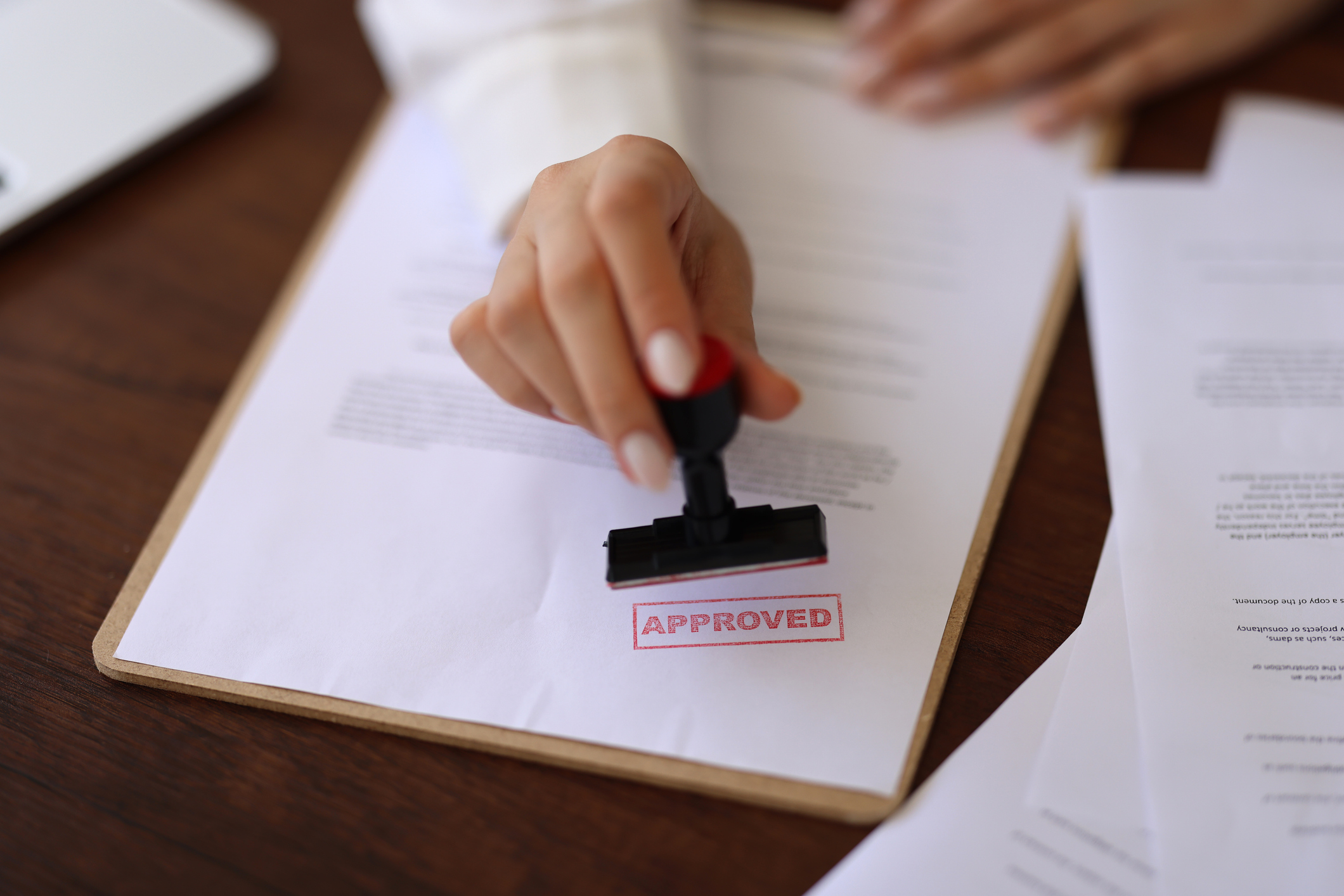IRS Form 843: How to Request Penalty Abatement or Tax Refund From the IRS
When the IRS adds penalties or interest to your tax balance, the amount you owe can grow quickly—making it harder to catch up and move forward. Fortunately, you can use IRS Form 843 to request penalty abatement and get relief from those extra charges.
Quick Facts: IRS Form 843
- IRS Form 843 is the official way to request penalty abatement or a tax refund for specific errors.
- File it within 3 years of your original return or 2 years of payment.
- Always include documentation and mail it to the correct IRS address.
- For complex or high-stakes cases, let TaxRise handle the process and advocate for you.
What Is IRS Form 843?
IRS Form 843, Claim for Refund and Request for Abatement, is the official document taxpayers use to request the removal (abatement) of certain IRS penalties and fees, reduce interest caused by an IRS error, or claim a refund of specific taxes paid by mistake. Form 843 helps you take back control and start resolving your tax situation with confidence.
Form 843 allows taxpayers to formally ask the IRS for relief in these situations:
- A penalty or interest was added incorrectly or unfairly,
- A written IRS error or delay caused additional charges, or
- You qualify for first-time penalty abatement or reasonable cause relief.
Form 843 can also be used to request refunds of certain employment-related or excise taxes, Social Security or Medicare taxes withheld in error, or to apply for a net interest rate of zero when overpayments and underpayments overlap.
Important: Do not use Form 843 to request a refund of income, estate, or gift taxes. Those use different forms (like Form 1040-X or Form 1120-X
When Should You File Form 843?
You should file Form 843 if:
- You were charged IRS penalties (like failure-to-file or failure-to-pay) and believe you qualify for penalty abatement.
- You were charged interest because of an IRS error or processing delay.
- You received incorrect written advice from the IRS that caused a penalty or tax issue.
- You had Social Security or Medicare taxes withheld in error and your employer refuses to adjust it.
- You need to request an abatement of a branded prescription drug fee or health insurance provider fee (rare cases for businesses).
Do not file Form 843 for income tax refunds, or to amend a prior return. Those requests must be handled using other IRS forms.
How Long Do You Have to File Form 843?
You generally must file your claim within 3 years of filing the original return or within 2 years of paying the tax, whichever is later. Missing this window could make you ineligible for a refund or abatement—even if you qualify otherwise.
Step-by-Step IRS Form 843 Instructions
Form 843 is only two pages long, but accuracy matters. Here’s how to fill it out correctly based on the official IRS Instructions for Form 843 (Rev. Dec. 2024).
Step 1: Select the Reason for Filing
At the top of the form, you’ll find several checkboxes. Choose the one that fits your reason:
- Abatement or refund of penalty (for reasonable cause or first-time relief)
- Abatement of interest (due to IRS delay or error)
- Refund of overpaid Social Security or Medicare taxes
- Request for net interest rate of zero (for overlapping over/underpayments)
If your reason doesn’t fit any listed category, check “Other (specify)” and describe it.
Step 2: Enter Your Personal Information
Provide your name, address, and Social Security Number (SSN) (or Employer Identification Number for businesses).
If you’re requesting relief for a joint tax return, include your spouse’s information and signature.
Step 3: Complete Lines 1–4
- Line 1: Enter the tax period or fee year. Use a separate Form 843 for each year or type of tax.
- Line 2: Enter the amount of penalty, interest, or tax you want refunded or removed.
- Line 3: List the dates of payments related to your request.
- Line 4: Check the type of tax involved (e.g., income, employment, excise).
Step 4: Add Supporting Details (Lines 5–8)
- Line 5: Check which form or return this issue relates to (for example, “1040” for individual tax returns).
- Line 6: Enter the Internal Revenue Code section that applies to your penalty (you can find this on your IRS notice).
- Line 7: Select your reason for requesting relief:
- a) IRS errors or delays
- b) Erroneous written advice
- c) Reasonable cause or other lawful reason
- d) None of the above
- Line 8: Provide a clear explanation of why you believe your request should be approved. Include facts, dates, and supporting documents—such as:
- IRS notices
- Medical or disaster documentation
- Proof of timely mailing or prior compliance
Attach additional pages if needed, and write your SSN or EIN on each attachment.
Step 5: Sign and Date the Form
- Both spouses must sign if it relates to a joint return.
- Corporations must have an authorized officer sign.
- Include your title if signing on behalf of a business, estate, or trust.
Where to Send Form 843
Where to mail your completed form depends on why you’re filing:
| If you are filing Form 843 for… | Mail to: |
|---|---|
| In response to an IRS notice | Address listed on that notice |
| Estate or gift tax matters | IRS, Attn: E&G, Stop 824G, 7940 Kentucky Drive, Florence, KY 41042-2915 |
| Branded prescription drug fee | IRS, Mail Stop 4921 BPDF, 1973 N. Rulon White Blvd., Ogden, UT 84201-0051 |
| Annual fee on health insurance providers | IRS, Mail Stop 4921 IPF, 1973 N. Rulon White Blvd., Ogden, UT 84201 |
| Penalties, interest, or other general reasons | Mail to the IRS Service Center where you would file your current-year return |
If you received a notice about your penalty, always use the address shown on that notice—it ensures the form reaches the correct IRS department faster.
How long does it take the IRS to process Form 843?
The IRS typically takes three to six months to review and process Form 843 requests for penalty abatement, though complex cases may take longer. You’ll receive a written notice or letter once the IRS makes a decision on your request. To check the status, you can call the IRS at 1-800-829-1040 (individual) or 1-800-829-4933 (business) and reference your notice number or mailing date. For faster updates and professional follow-up, TaxRise can contact the IRS on your behalf and keep you informed throughout the process.
Common IRS Form 843 Mistakes and How to Avoid Them
Even though IRS Form 843 is relatively short, many taxpayers make small but costly errors that can delay or even derail their request for penalty relief or a refund. Below are some of the most common Form 843 mistakes—plus how to avoid them to improve your chances of getting approved.
Using Form 843 for Income Tax Refunds
Form 843 is frequently used incorrectly by taxpayers seeking regular income tax refunds. That’s a job for Form 1040-X, the Amended U.S. Individual Income Tax Return. Use Form 843 only for penalty abatement, interest relief, or refunds of certain non-income taxes or fees.
Forgetting to Include Supporting Documentation
The IRS almost never approves abatement requests based on explanation alone. Strengthen your claim by attaching IRS notices, medical or disaster documentation, proof of timely mailing, or written IRS correspondence that supports your request. A well-documented case is far more likely to be approved.
Leaving Off Your SSN or EIN
Form 843 and its attachments may be separated during processing. Always include your Social Security Number (SSN) or Employer Identification Number (EIN) on every page and attachment to keep your paperwork connected to your account.
Combining Multiple Tax Years or Penalty Types
Each Form 843 submission must address a single tax year and issue. Filing one form for multiple years or penalty types is a common cause of rejection. To avoid delays, complete and mail a separate form for each request.
Mailing to the Wrong IRS Address
Mailing Form 843 to the wrong IRS service center is one of the simplest—but most damaging—errors. Always double-check the mailing address listed on your IRS notice or in the official IRS Form 843 instructions. If you’re unsure, call the IRS to confirm where your form should be sent.
By steering clear of these frequent mistakes, you’ll make the Form 843 process faster, smoother, and far more likely to end with an approved penalty abatement.
What Happens After You File Form 843?
The IRS will review your request and may contact you for additional documentation. If your claim is approved, penalties or interest will be removed from your balance, or you’ll receive a refund check. If your claim is denied, you’ll receive a written explanation. You can appeal the decision within 30 days through the IRS Independent Office of Appeals.

What If the IRS Rejects Your Penalty Abatement Request?
If the IRS denies your Form 843 request, don’t lose hope—there are still options to challenge or appeal their decision. When your abatement request is rejected, the IRS will send you a written notice explaining why. This letter typically outlines the reasons for denial and provides instructions on how to appeal. It’s important to act quickly: in most cases, you have 30 days from the date of the letter to file an appeal with the IRS Independent Office of Appeals.
During the appeal process, your case will be reviewed by a new IRS officer who was not involved in the original decision. This gives you a second opportunity to present your argument and submit additional documentation that supports your claim. Many taxpayers strengthen their appeal by providing clearer evidence of reasonable cause—such as medical records, proof of natural disaster, or correspondence that shows the penalty resulted from an IRS error.
If your appeal is denied again, you may still be able to take your case to the U.S. Tax Court or the U.S. Court of Federal Claims. However, these steps are more complex and time-consuming, which is why most people seek help from experienced tax professionals long before reaching that stage.
Safeguard Your Penalty Abatement Request
At TaxRise, our licensed tax professionals and enrolled agents are highly experienced in navigating IRS appeals. We’ll review your denial letter, identify weaknesses in the IRS’s reasoning, and prepare a strong appeal on your behalf—complete with documentation and persuasive argumentation that aligns with IRS standards. Having professional representation can dramatically improve your chances of a favorable outcome, especially when dealing with complicated tax records or prior compliance issues.
Even if your penalty abatement appeal isn’t successful, there are still ways to reduce your total tax burden. You may qualify for other IRS Fresh Start programs such as an Offer in Compromise (OIC)—which allows you to settle your tax debt for less than the full amount owed—or an Installment Agreement that spreads payments out over time. If you’re facing significant financial hardship, Currently Not Collectible (CNC) status could temporarily pause all IRS collection efforts until your financial situation improves.
TaxRise can help you determine which of these programs you may qualify for and guide you through every step of the application process. From gathering documentation to negotiating with the IRS, we ensure your case is presented as effectively as possible—so you can move closer to true financial relief and a fresh start.
Need Help Filing Form 843? TaxRise Can Help
Filing Form 843 correctly can make the difference between getting IRS relief—or getting denied.
At TaxRise, our licensed tax professionals, enrolled agents, and IRS-certified attorneys specialize in penalty abatement requests, reasonable cause explanations, and IRS negotiations.
We’ll review your IRS transcripts, prepare your Form 843 accurately, and ensure your supporting evidence meets the IRS’s expectations—so you get the relief you deserve. Let’s get your financial future back on track. Schedule your free consultation today to see if you qualify for IRS penalty relief.
Qualify today for a Fresh Start.
Learn how easy it is to resolve your tax problems.
Frequently Asked Questions
You can request penalty abatement by calling the IRS to ask for First-Time Penalty Abatement relief or by filing IRS Form 843 (Claim for Refund and Request for Abatement) with documentation that proves you qualify under reasonable cause. Supporting evidence might include records of illness, natural disasters, or proof that you relied on incorrect written advice from the IRS. If you’re unsure which type of penalty relief applies to your situation, TaxRise can review your IRS transcripts and eligibility to help you get the maximum relief available.
You should mail your completed Form 843 to the address listed on your IRS notice, as that ensures your request reaches the correct department. If you did not receive a notice, send your form to the IRS Service Center where you would normally file your current-year tax return. The correct mailing address depends on your specific situation—see the “Where to Send Form 843” table above for exact addresses. TaxRise can also verify the correct destination to help prevent mail delays or misrouted forms.
When submitting Form 843, always attach supporting documents that prove your eligibility for penalty abatement or a tax refund. Include copies of IRS notices, proof of timely filing (such as certified mail receipts or e-file confirmations), and evidence of reasonable cause, like medical records, disaster declarations, or written IRS correspondence showing agency error. Adding your Social Security Number (SSN) or Employer Identification Number (EIN) on each page ensures your paperwork stays connected to your IRS case.
No — as of 2025, the IRS does not accept Form 843 electronically. It must be printed, signed, and mailed to the appropriate IRS address. Be sure to include all required documentation and keep a copy of your submission and mailing receipt for your records. If you need help preparing or mailing your Form 843 correctly, TaxRise can handle the entire process and ensure your request reaches the IRS without delays.




